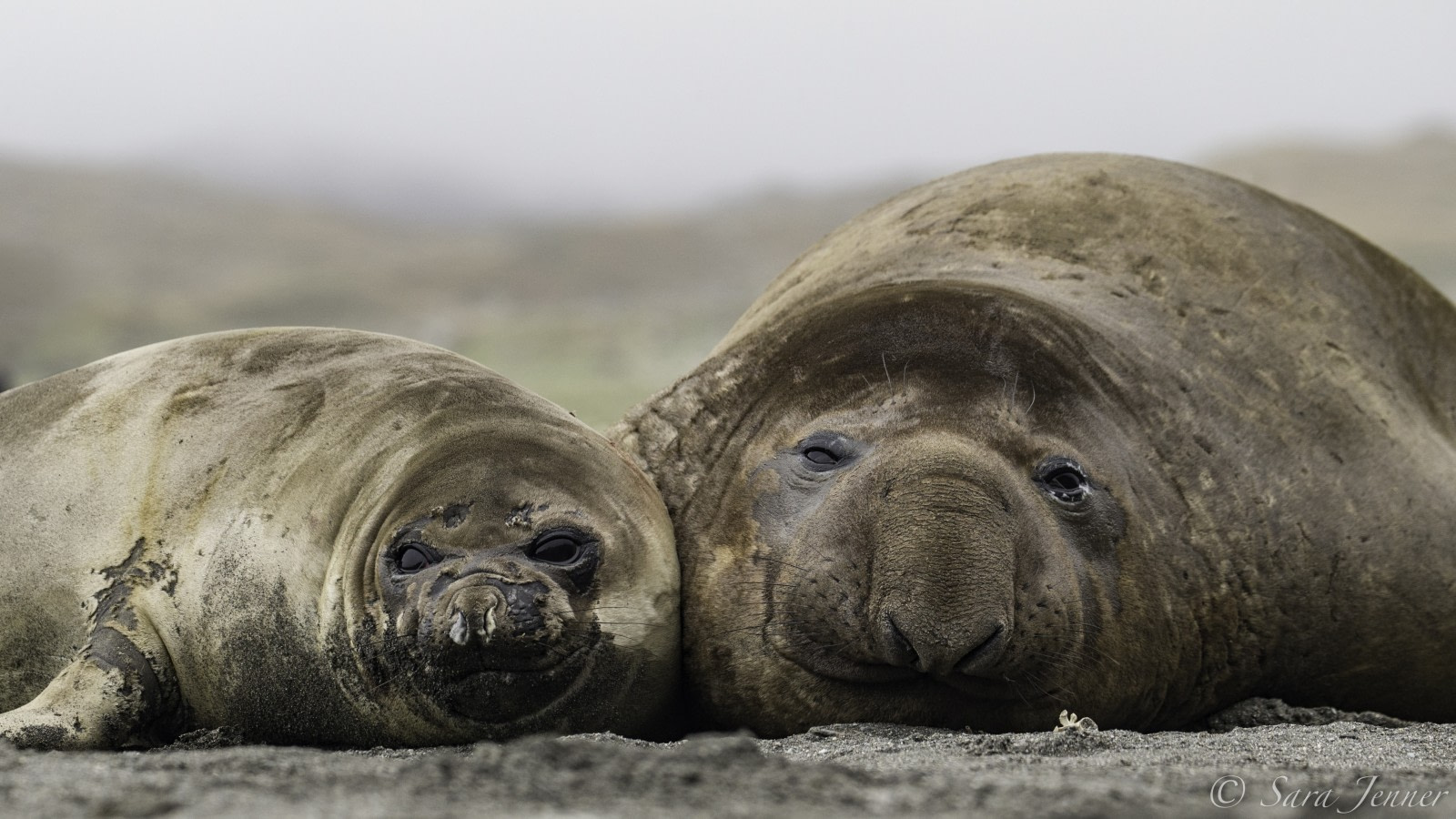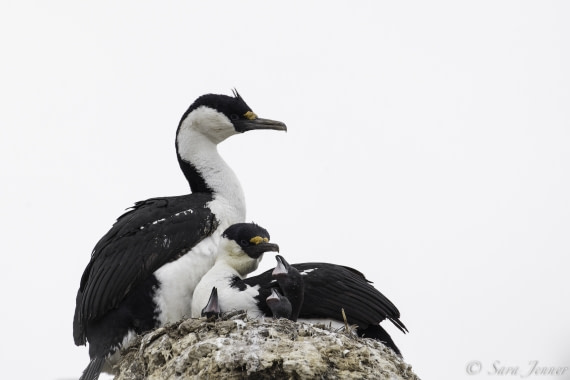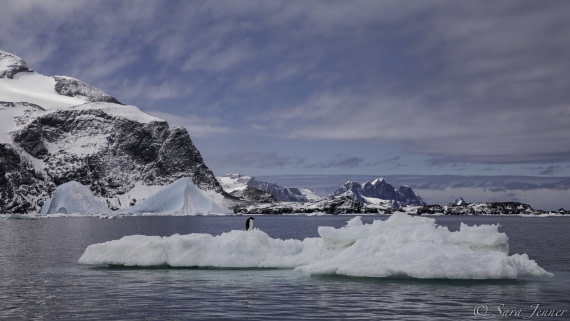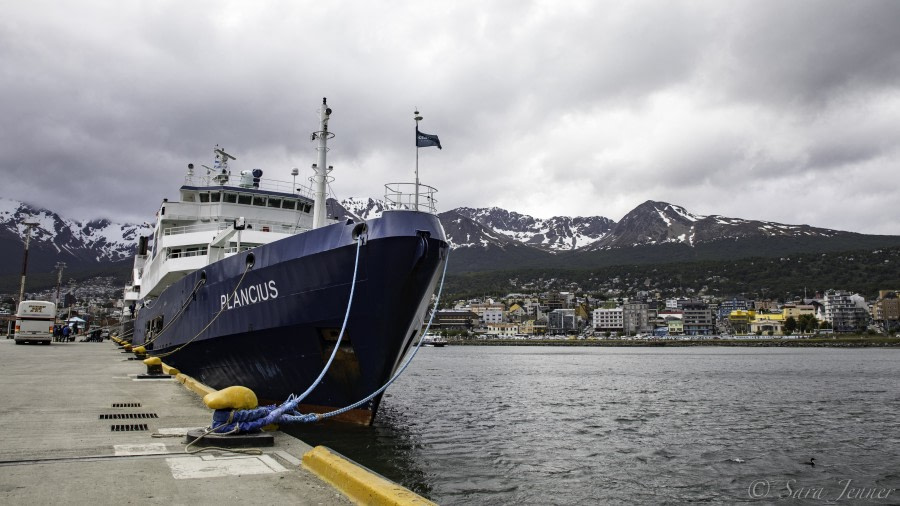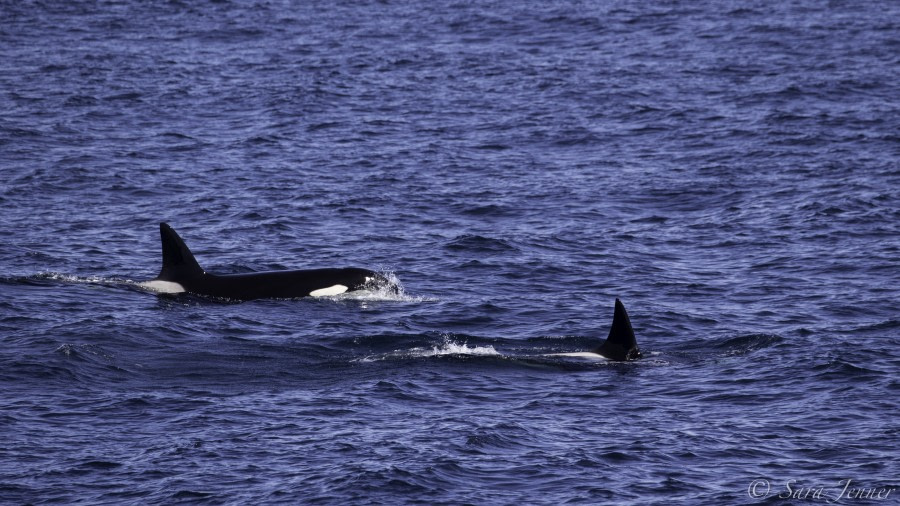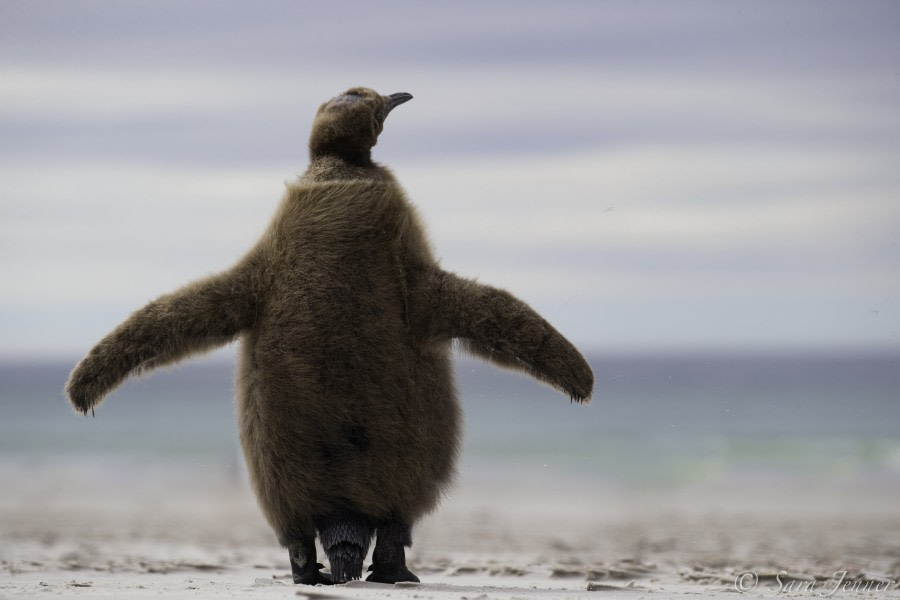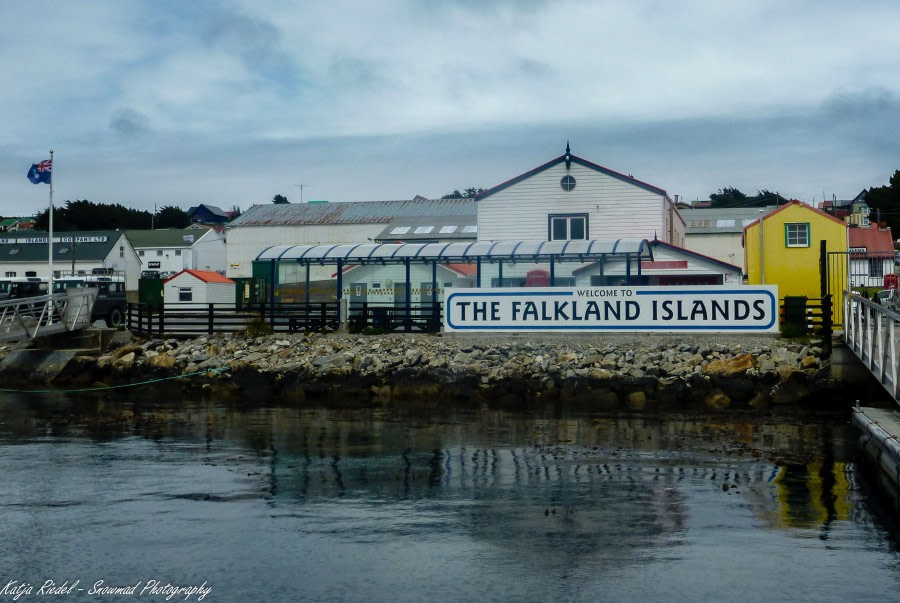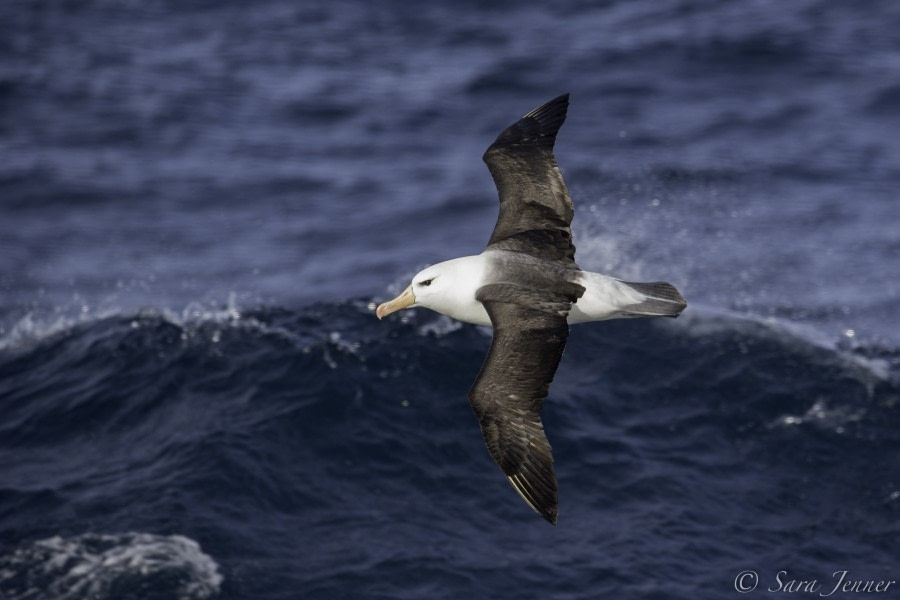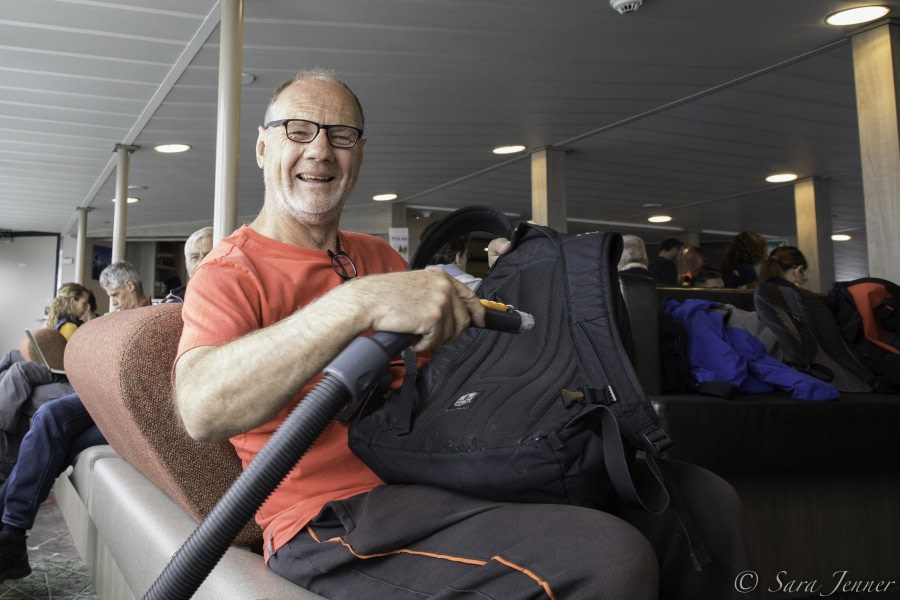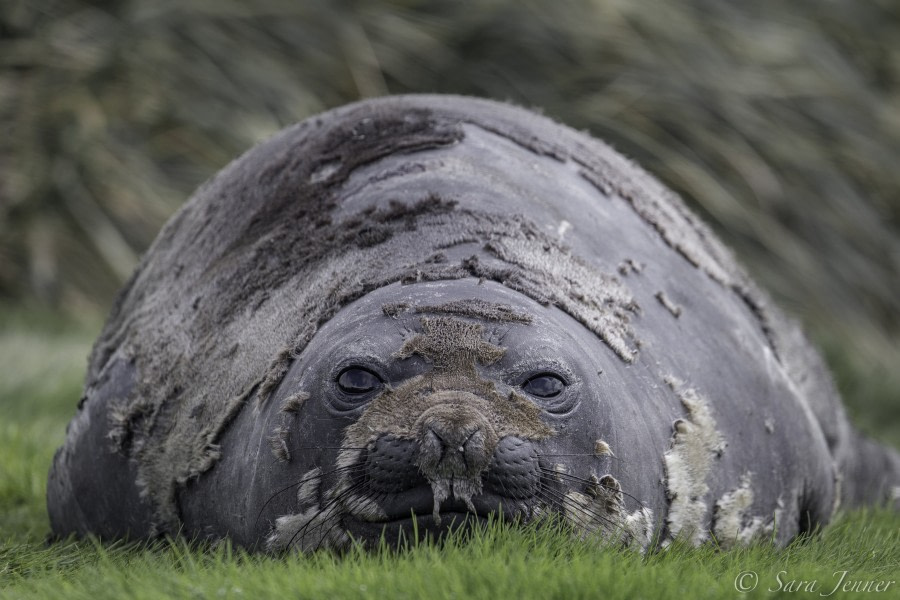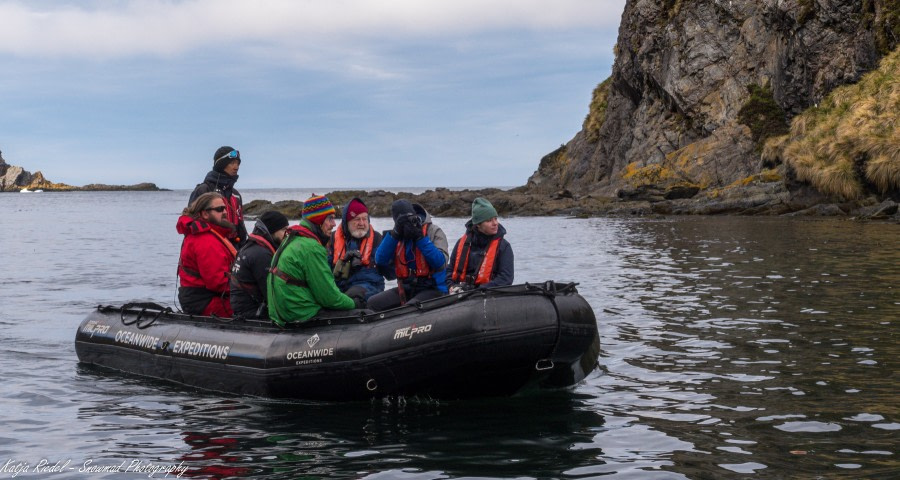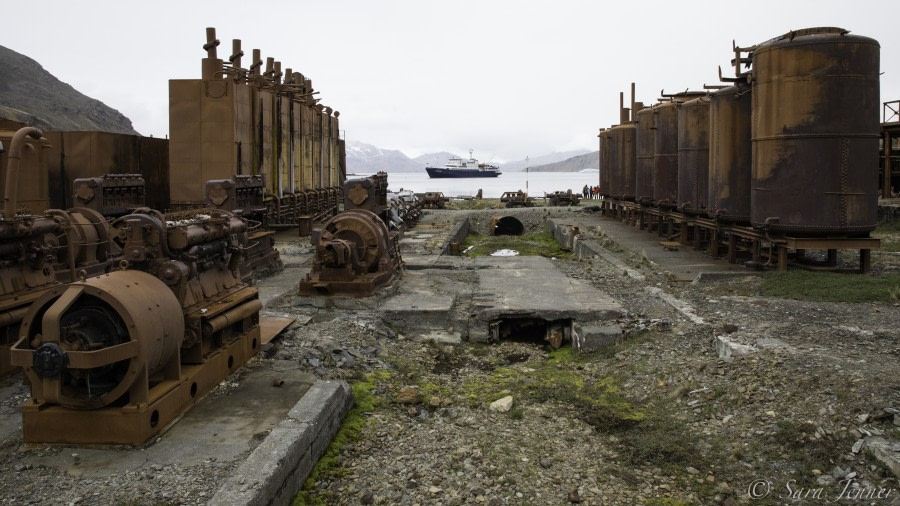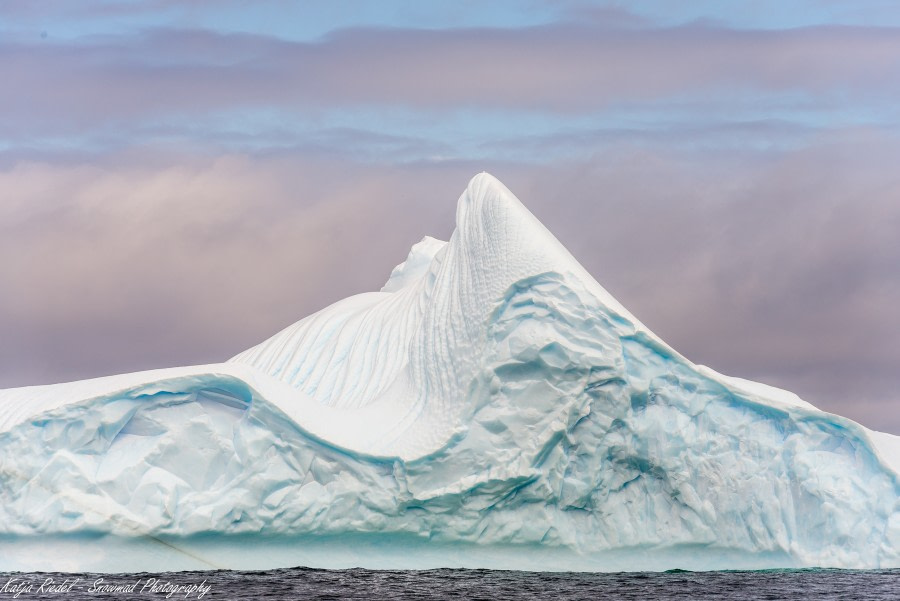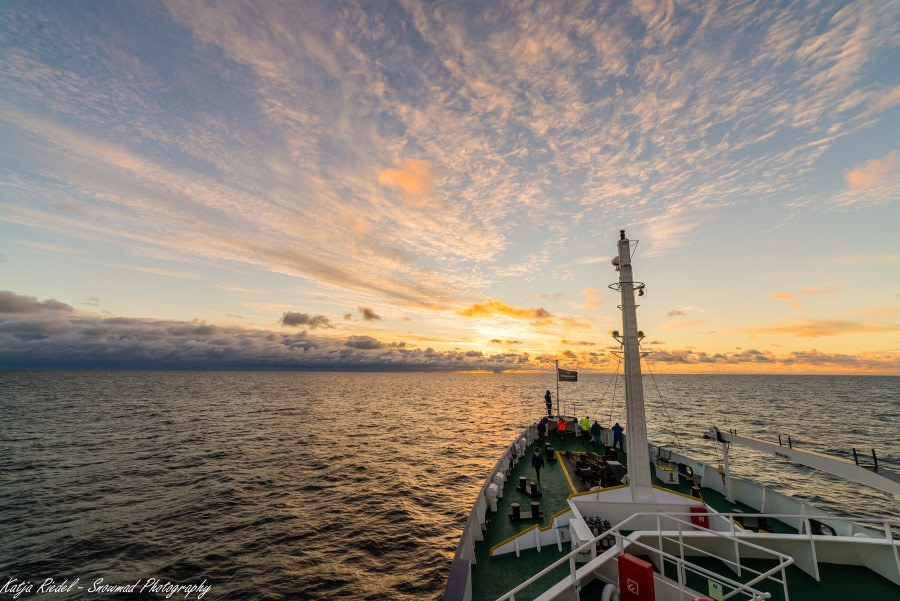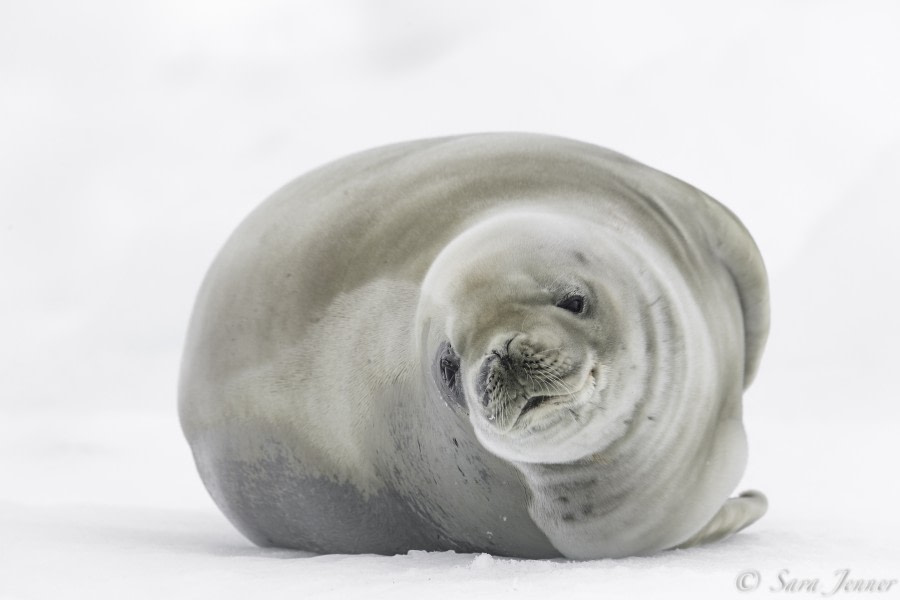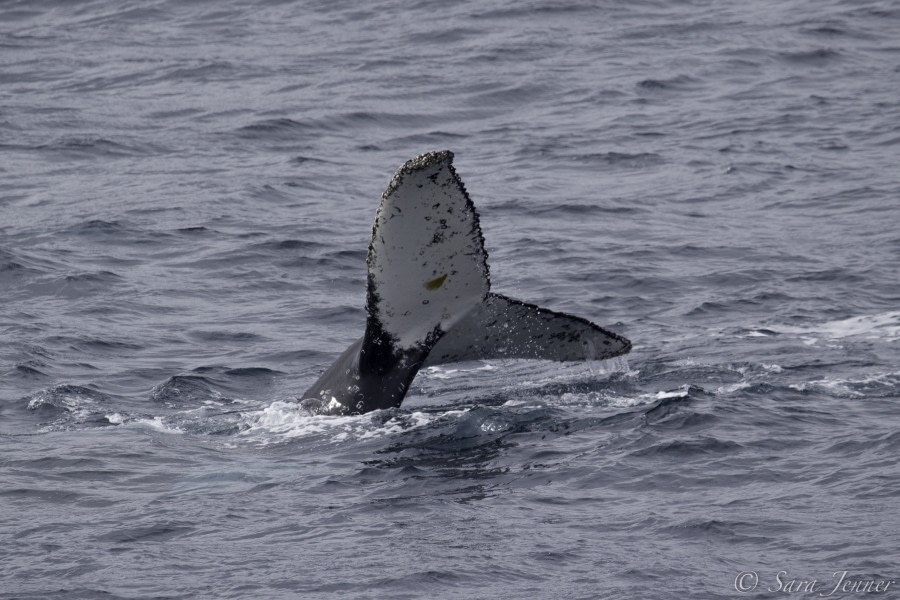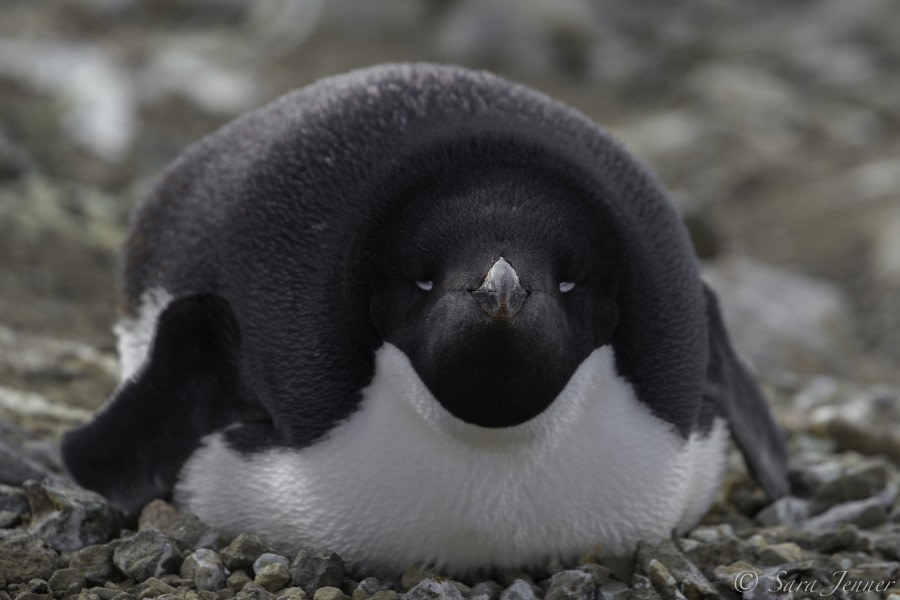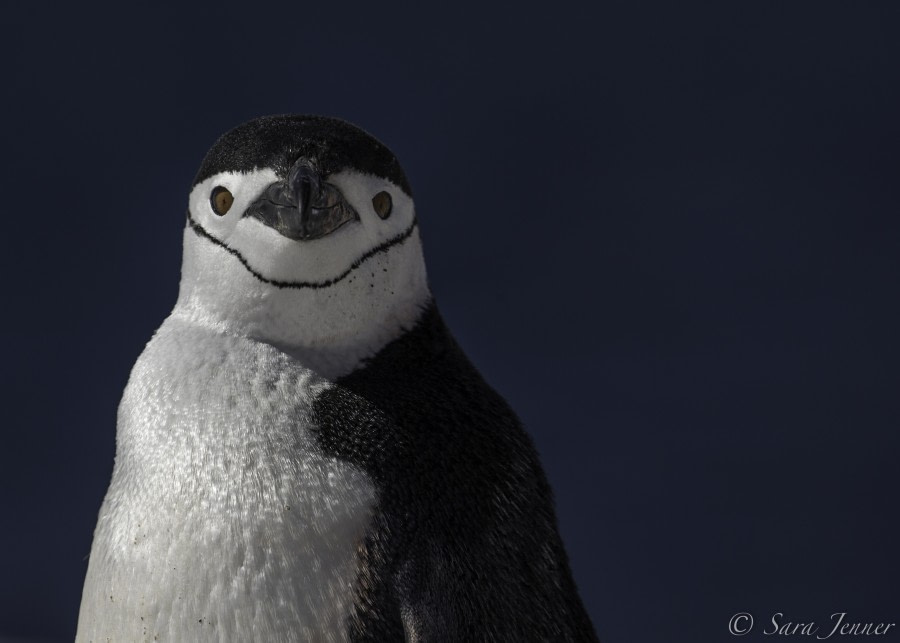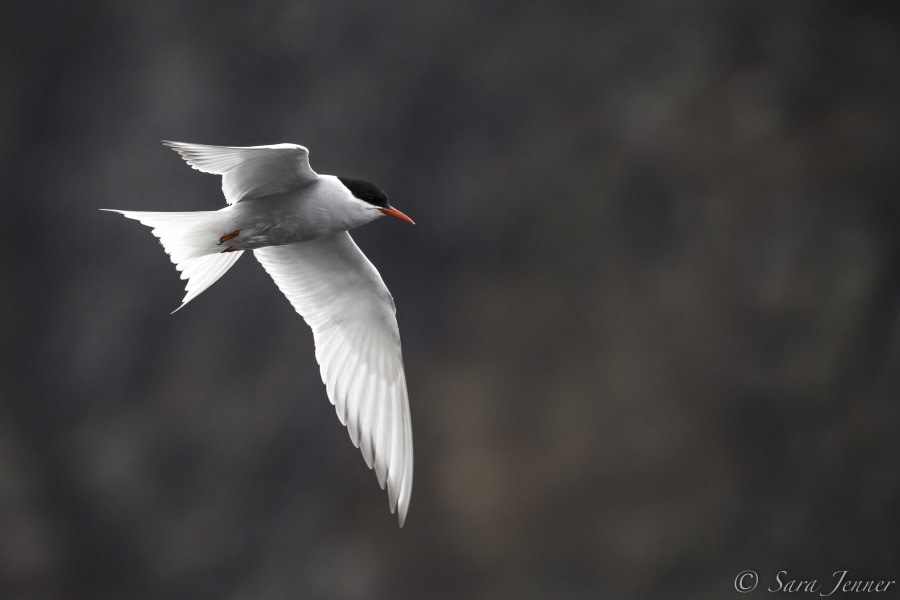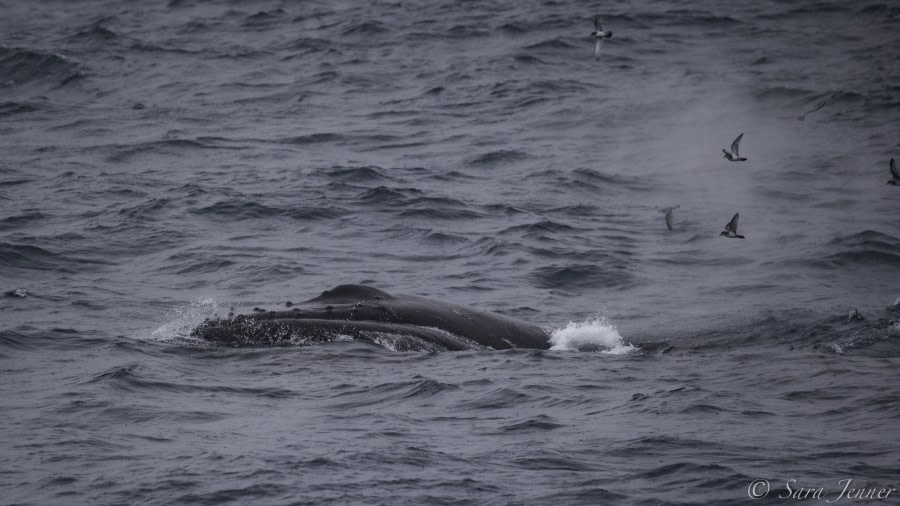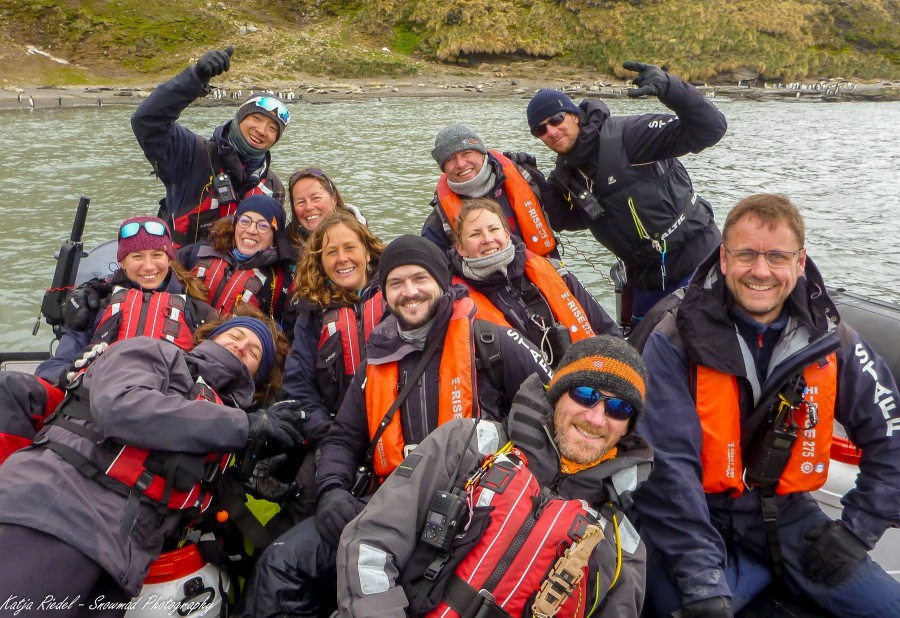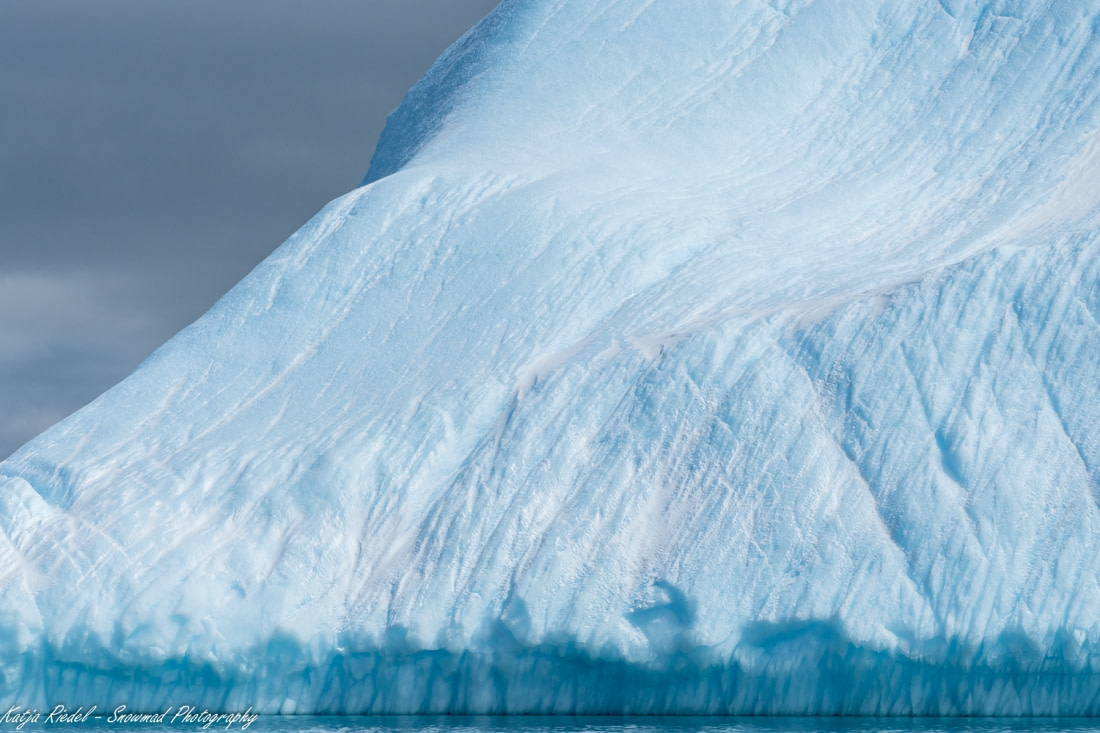| Fecha: | 30.11.2019 |
| Posición: | 42°45’.7 S, 65°01’.4 W |
We spent days dreaming about our voyage to come, hours shopping, reading, preparing logistics, excitedly chatting with family, friends, colleagues and neighbours about our atypical trip choice, then spent hours, days, traveling by planes, cars, buses… We thus each had our own little scenario as to how our arrival onboard Plancius would look like… but certainly none of us had imagined this one. Neither had Ali, our Expedition Leader. Her slick, blond figure welcomed us at Ushuaia’s pier…with bad news: due to a medical issue that had occurred during the previous cruise, departure will be delayed… or perhaps even worse, cancelled! At this point, our cruise was in the hands of Argentinian authorities, and all we could do was wait. But thankfully and after a pretty stressful hour, we were authorized to enter the pier. Feeling relieved, we got our first glimpse of Plancius. She awaited us quietly amongst other expedition ships –smallest, but fiercest. Her bright blue hull contrasted with the grey waters of the Beagle channel, and we proudly boarded the ship, greeted by a warm “welcome onboard!” of crewmembers that took care of our luggage and showed us the way to our cabins. We readily started exploring the ship, striding along corridors and decks, excited liked kids discovering a new playground. We rapidly found our way to the restaurant, the reception, the bridge, or the observatory lounge. We gathered in the latter for a mandatory security briefing given by our chief officer, François, and a brief presentation of the expedition team. Our expedition leader Ali is from the UK. Before working onboard expedition ships, she used to be a schoolteacher and member of the conservation department in the Falkland Islands for 15 years! Daniel, from Germany, is Ali’s assistant. Mainly based in Iceland, Daniel spends most of his time working as a naturalist guide all over the world. The rest of the team is composed of Joachem, glaciologist from the Netherlands, Katja, German researcher and guide specialised in atmospheric chemistry, who will have the difficult task of translating all documents and lectures into German, Jerry from China, former international travel consultant gone rogue to become international travel guide, Sara, wild life photographer extraordinaire originally from the UK, Marie, French researcher in developmental and evolutionary biology, and Rustyn, from the US, but based in Patagonia where he runs a backpacker’s hostel. The team is completed by specialised divers who will accompany some of us to discover polar submarine life, namely Jerry, Catherine, Chris (all three from the UK) and Chloé (from France). What an international team! All its members are “bipolar”: these passionate fellows, badly infected by the infamous polar virus, spend most of their time hopping from one pole to the other! A drill, necessary simulation of the ship’s evacuation in case of an emergency, follows François’s presentation. Because of the delayed departure, the presentation of life onboard by our hotel manager Zsuzsanna is reported and we are informed that Nick, the ship’s doctor, will stick around after dinner to distribute sea sickness pills. Debates ensues: to take medicine, or not to take medicine? That is the question.
